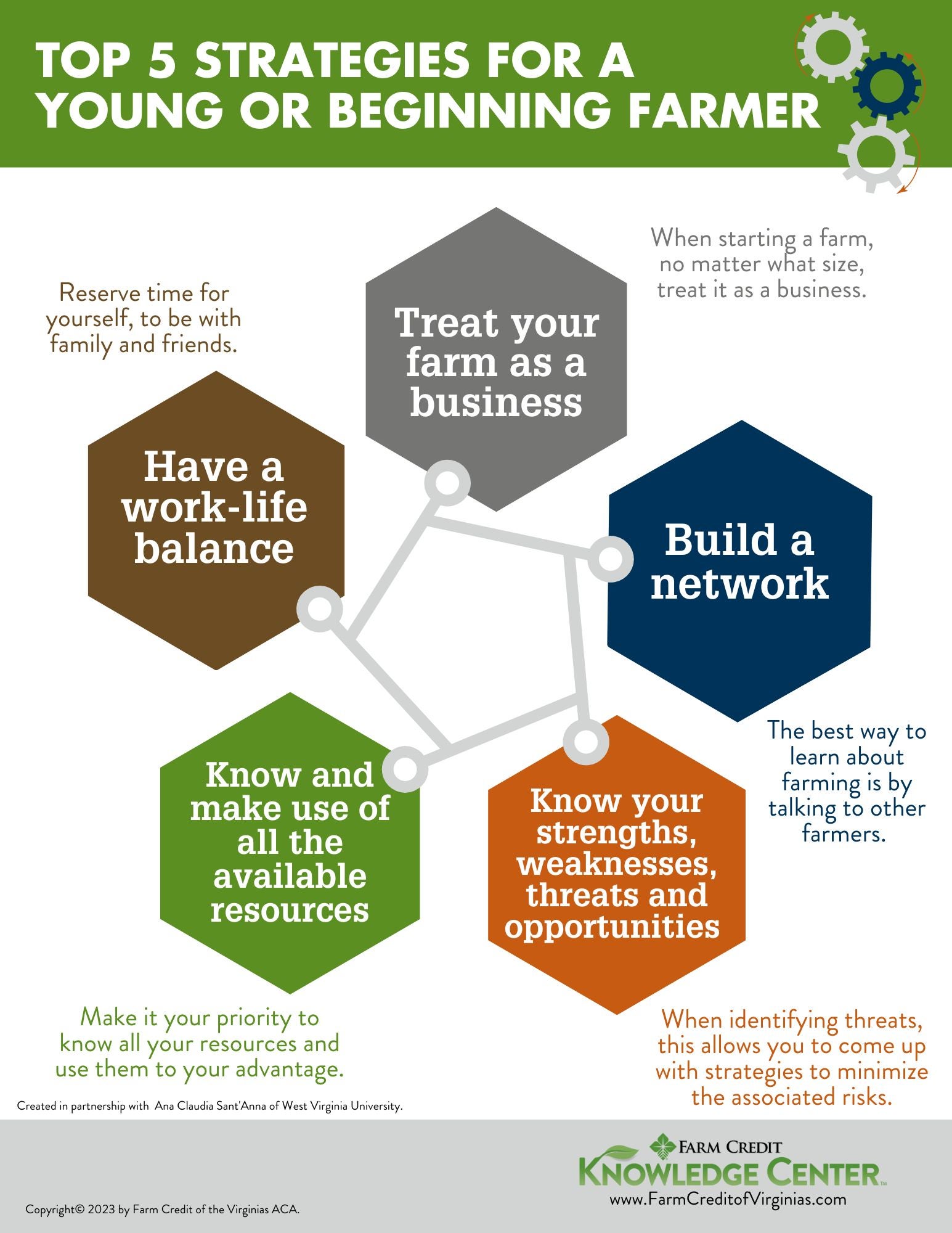Top Five Strategies for a Young or Beginning Farmer
Young, Beginning, Small & Veteran Farmers
The average US farmer is 57 years old (USDA 2017). In fact, young producers (those under 35) make up less than 10% of producers while beginning farmers (those with 10 years or less of experience) make up 27% (USDA 2017). These farmers face two major challenges: access to land and access to credit. So here are 5 top things to consider as a young and starting farmer:
Treat your farm as a business
When starting a farm, no matter what size, treat it as a business. Granted it is not the same as opening a small shop or family diner, but it is a business. What does this mean? Develop a business plan with all financial statements and measures. Financial statements will help you understand the financial health of your business and to answer: Are you breaking even? Are you solvent or profitable? Are you paying yourself for your work? They can help you identify ways to improve your profits (e.g. changing your marketing mix and/or reducing costs). Setting future goals, say for 5 years from now, and setting a path towards it is also part of a business plan. Pro forma statements that reflect variations in revenues due to fluctuation in prices should also be completed. A complete business plan is important when seeking investors or applying for a loan.
Know your strengths, weaknesses, threats and opportunities
As with any business, you should be aware of its strengths, weaknesses, threats and opportunities. Strengths and weaknesses are identified by looking inside of the farm, while threats and opportunities are identified by looking at factors outside of the farm. Examples of strengths could be your skills and knowledge that you bring to the business, or the quality of inputs used, or personalized customer service. Identifying strengths leads to defining your farm’s competitive advantage. What makes it standout from all others? Weaknesses in a business can affect your profits and hinder its competitive advantage. Tackle the crucial ones first. An analysis of external factors such as population growth, competitors, suppliers, policies and buyers, can help you identify opportunities and threats. Opportunities can also help you define your competitive advantage. Is there a niche market for your product? Or do you, as a young farmer, identify trends in consumer needs not yet met? When identifying threats, this allows you to come up with strategies to minimize the associated risks.
Know and make use of all the available resources
There are numerous resources for young and beginning farmers (e.g. special loan programs, farm demonstration workshops, and specific grants), many are available at low cost. For instance, West Virginia University (WVU) Soil Testing Lab managed by the Davis College offers free routine soil testing for WV residents. Make sure that you get to know your local extension agent. Have you ever reached out to extension specialists at your nearest land grant university? Are you aware of the grants that you might be eligible for through USDA and the Natural Resources Conservation Services? Make it your priority to know all your resources and use them to your advantage.
ACCESS ADDITIONAL RESOURCES: Visit the Farm Credit Knowledge Center's Resources
Build a network
The best way to learn about farming is by talking to other farmers. You can learn things that cannot be found in a book. Cultivating a relationship with a mentor may help you avoid common mistakes and quickly identify paths to success. Connect with farmers at conferences, seminars and workshops devoted to farming (e.g. WV Small Farm Conference), or in other places they may go to (e.g. farmers’ market, local farm supply store). Participating in internships or apprenticeships also helps you connect with farmers. Use this opportunity to build your own network which should also consist of other local businesses. This could mean potential new clients, input suppliers or building better relations with your local bank.
Have a work-life-balance
Mental stress also affects farmers. Farming can be very isolating. Apart from isolation, financial issues, farm economy and weather can impact farmers’ mental health (Sledge and Fortenberry 2023). Having a comprehensive health insurance and emergency funds can reduce some of the stress. Farming is demanding, and many times farmers hold jobs off-farm to keep things running. Therefore, it is important to strive to maintain a work-life-balance. Reserve time for yourself, to be with family and friends. A good trick is to schedule family and friend times like you would any other important errand related to your farm and stick to it.
Young and beginning farmers face many challenges as they start their farm. Here I have listed my top 5 things for these farmers to keep in mind as they navigate through these challenges. Note that while these are not exhaustive, they are meant to motivate you to start thinking about farming in a new light.
Author:
Ana Claudia Sant’Anna*
Assistant Professor of Agribusiness and Agricultural Finance
Division of Resource Economics and Management
West Virginia University
Email: anaclaudia.santanna@mail.wvu.edu
*Disclaimer any views expressed are my own
Sources:
Slege, S. and B. Fortenberry. 2023. "Farm Stress" Choices. Quarter 1. Available online: https://www.choicesmagazine.org/choices-magazine/theme-articles/farm-stress/farm-stress
Coulter, M. K. 2013. "Strategic management in action." 6th ed. Pearson Education, Inc.
USDA National Agricultural Statistics Service, 2017 Census of Agriculture. Complete data available at www.nass.usda.gov/AgCensus
